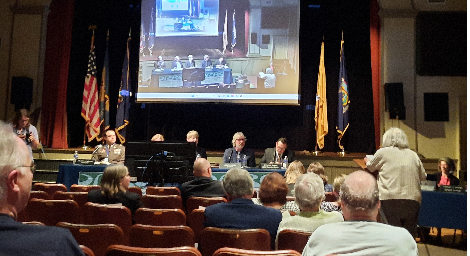Small Town, Big Changes
October 22, 2008Buried Secrets: Is Natural Gas Drilling Endangering U.S. Water Supplies?
November 13, 2008Phillip Yates, The Aspen Times, Tuesday, November 11, 2008
GLENWOOD SPRINGS — An analysis of about 700 water samples from 100 water wells and other water sources south of Silt and Rifle shows an increasing presence of methane, according to a consultant who reviewed the data.
Geoffrey Thyne, a geology professor at the Colorado School of Mines, said the level of methane detected in those samples, collected over a five-year period, may indicate the presence of natural gas and produced water in area water wells.
While produced gas and water may be impacting area wells, it is happening at levels below where the Colorado Oil and Gas Conservation Commission may take possible regulatory action, Thyne said.
The impact that methane — which is a primary constituent of natural gas, according to the Environmental Protection Agency — may have on area wells is expected to increase as more drilling occurs in the area, Thyne told Garfield County commissioners on Monday.
“I think there is a reason to worry about continued development without taking into account what we already know,” said Thyne, adding there are now about 1,000 wells in the area he analyzed. “We are seeing a slowly building problem with the more wells we put in. The question is how many wells do we put in?”
Much of Thyne’s conclusions came from a water study conducted by URS Consulting of Denver that was completed in early 2006.
That study focused on the Mamm Creek natural gas field south of Silt and came in the wake of the discovery of the West Divide Creek gas seep in 2004.
The report found water quality in some areas of the study was very poor, notably Dry Hollow, Divide Creek and the eastern edge of Grass Mesa. However, the study found no definitive link between the apparent poor water quality and natural gas drilling and fracturing.
Thyne, who was hired by the county to review the water data, said his analysis of water samples showed some samples that had greater than 1 part per million of methane and that seem to be related to the 1,000 natural gas wells in the area. He added that most of the high methane concentrations occurred in the central part of the study area, while similar high concentrations were found in the southeast study area.
“All wells leak slightly,” Thyne said. “Water wells show higher levels of methane because of that.”
While state oil and gas regulators largely think the high presence of methane may be a false-positive, or mostly a naturally occurring phenomenon, he disagrees with that interpretation.
“Most of the domestic well methane [impacts] we see is from produced gas, not from natural fermentation, which some people have alleged,” he said.
Geological features, like long, linear fractures in the area, may serve as a possible upward conduit for natural gas in the area, Thyne added.
While the water samples did not show any significant presence of benzene, which is a known carcinogen, Thyne noted compounds like benzene largely won’t be detected 200 feet away from its source.
“It is going to be very hard to detect using standard protocols,” he said.
One recommendation Thyne had for the commissioners in another phase of looking into the water conditions in the area is to “zero in on high methane wells and attribute it to a particular source.”
Judy Jordan, the county’s oil and gas liaison, said in the wake of Thyne’s analysis it would be important to tell area residents the results of his findings.
“We owe it to the people whose wells we sampled,” she said.



